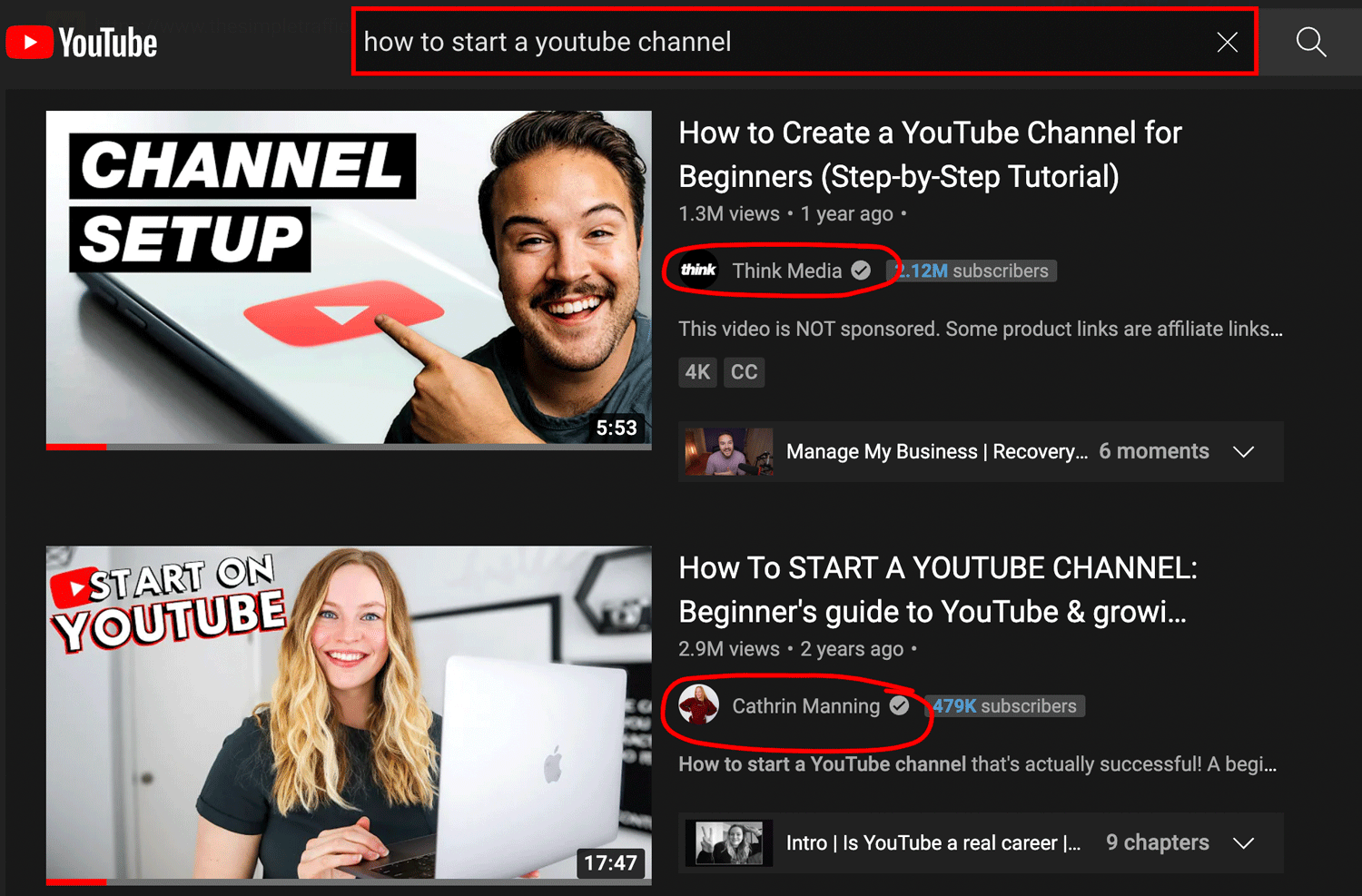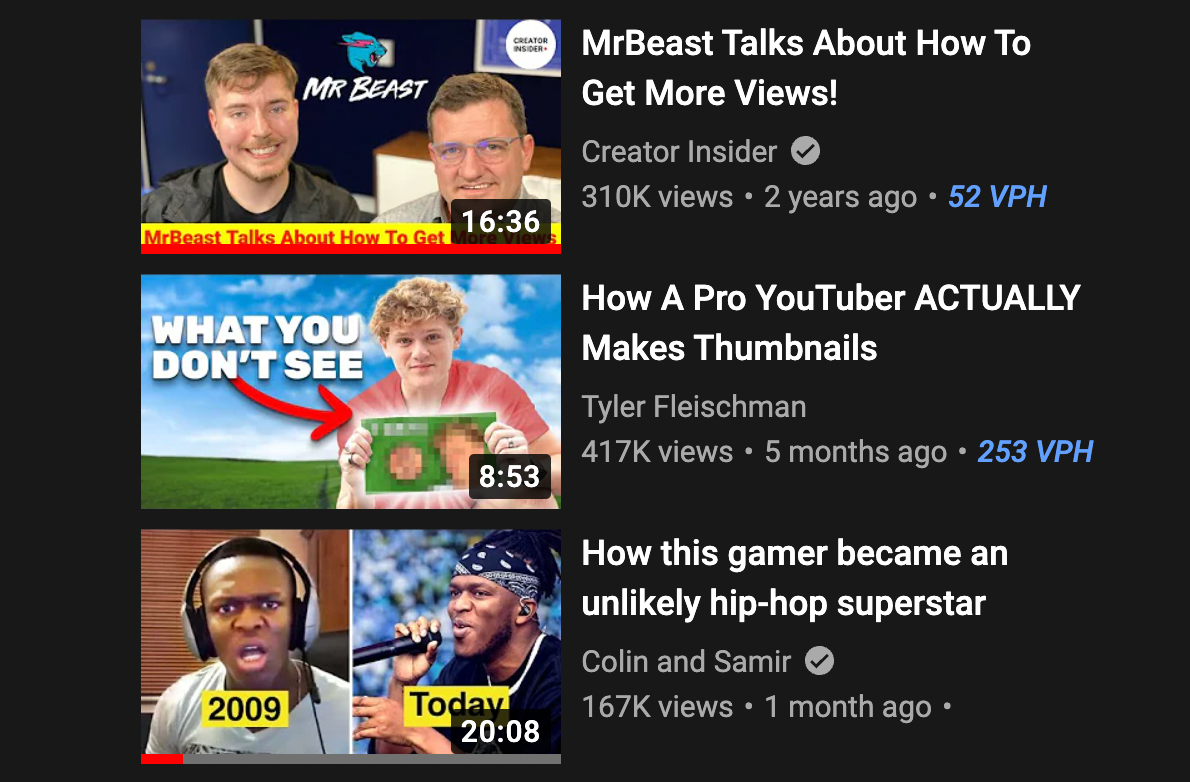Lydia Sweatt is a writer, bookworm, and bass guitar enthusiast. When she goes outside, a bicycle goes with her.
How to Find Your Biggest Competitors on YouTube
YouTube is a competitive place to make content. There are millions of channels out there, and each one is looking to gain more subscribers than the next. It's a place where new creators spend months, if not years, chasing their first 1,000 subscribers.
YouTube may be competitive, but it's important to remember that competition is relative. Most creators aren't competing with MrBeast — at least not directly. It's the people standing on either side of them that they compete with, not those floating above.
So if you've ever wondered "Who's my YouTube competition," you don't have to look far. Those are creators who:
- Share the same audience as you (your viewers watch their videos too).
- Create content similar to yours.
- Have the same YouTube niche or channel focus.
Without a doubt, you want to know these creators and how they operate on YouTube. That helps you understand your niche, find video ideas, and slowly improve your channel.
Ready to get started? Here's how to find your biggest competitors on YouTube.
1. Start with Keyword Research
Before finding your competitors, you must know what your audience searches for on YouTube. "Ultimate frisbee?" "Training pit bull puppies?" "Dewy makeup hacks?"
It depends on your niche, of course. But every channel has query-based entry points, or in other words, phrases people use to find videos.
Why do you need to know this? Well, viewers don't see your videos only when they perform a search; they see content from competitors too.
Suppose you know what viewers are searching for on YouTube. In that case, you can reverse-engineer the process to find other channels they watch (your competition).
Check the Research Panel in the YouTube Studio
If this sounds a bit complicated, don't worry. There's a research panel in the YouTube Studio, and it shows what your viewers are searching for overall.
Here's how to find it:
1. Go to the YouTube Studio (studio.youtube.com) and click Analytics in the left navigation bar.

2. Click the Research tab.

3. Scroll down and click Your viewers' searches. Set the first filter to "all searches," and make sure the geography filter is set to "all."

Here, you'll see a list of your viewers' searches on YouTube. As you scroll through this collection, look for keywords that best represent the videos you make. You can save relevant terms by clicking the bookmark symbol to the left.
2. Perform Some Searches with the Keywords You Found
Now that you know what viewers are searching for, it's time to do some testing. Take the keywords you just discovered and paste them into the YouTube search bar, one by one. With each search, take a look at the top video results. Which channels show up repeatedly?
Chances are, these are your biggest competitors on YouTube. They're covering the same topics as you, dominating search pages, and getting great exposure on the platform.
Here's a quick example of what we mean. vidIQ viewers search for a few things on YouTube, including:
- How to start a YouTube channel
- How to monetize a YouTube channel
- How to get subscribers on YouTube fast
We ran a YouTube search with each of these terms, and videos from the same channels kept popping up:
- Think Media
- Channel Makers
- Nick Nimmin
- Cathrin Manning
- Erin On Demand
- Justin Brown
- Roberto Blake

What does your list look like after doing this exercise? Be sure to keep it handy because we'll add more competitors in the next step.
3. Discover What Viewers Watch Outside of Your Channel
In the YouTube Studio, there's a helpful tool that shows which channels your viewers watch outside of your own. Browsing this panel does two things for your competitor search:
- Confirm the competitors you've already found (this list should mirror the one you just created).
- Reveal more competitors.
Ready to get started? Follow these steps to see what viewers are watching outside your channel.
1. Go to the YouTube Studio (studio.youtube.com) and click Analytics in the left navigation bar.

2. Click the Audience tab.

3. Scroll down and find the panel that reads Other channels your audience watches.

As we mentioned, you should see similarities between this list and the one you created. For example, we see videos from Channel Makers, Think Media, and Nick Nimmin.
However, a few channels showed up that we didn't spot before. Now we can research even more creators (that we know our audience likes) to see what they're doing on YouTube and how we stack up against them.
Keep in mind that this panel shows channels watched in the last seven days. That's not a lot of data, so research each channel and confirm they're actual competitors. Do they cover the same topics as you? Are they consistent on YouTube?
4. See Which Videos are Recommended Near Yours
Lastly, go to the video watch pages for your own content to see more competitors. This works best if you choose videos that represent your channel's focus, so try to click on the most relevant videos. For each video you choose, focus your attention on the right side of the screen.
This is where you'll see a list of video recommendations based on what you're currently watching or recently watched. It's a great place to find channels similar to yours, so take your time exploring!
You'll probably come across channels you've already seen, but keep scrolling. There's often a surprise or two you wouldn't have seen coming.
In our case, we spotted a video from Colin and Samir. They highlight successful creators on their YouTube channel (just like we do), but we're only discovering them at this stage of our research.

What does your list of competitors look like now? Ours grew a bit after completing all four steps:
- Think Media
- Channel Makers
- Nick Nimmin
- Cathrin Manning
- Erin On Demand
- Justin Brown
- Roberto Blake
- Think Media Podcast
- Colin and Samir
- Film Booth
Creating a list like this helps you find competitors to watch, analyze, and learn from on YouTube.
But keep in mind that the list will change over time. As new channels emerge and viewers find new interests, you're bound to have fresh competition on YouTube.



